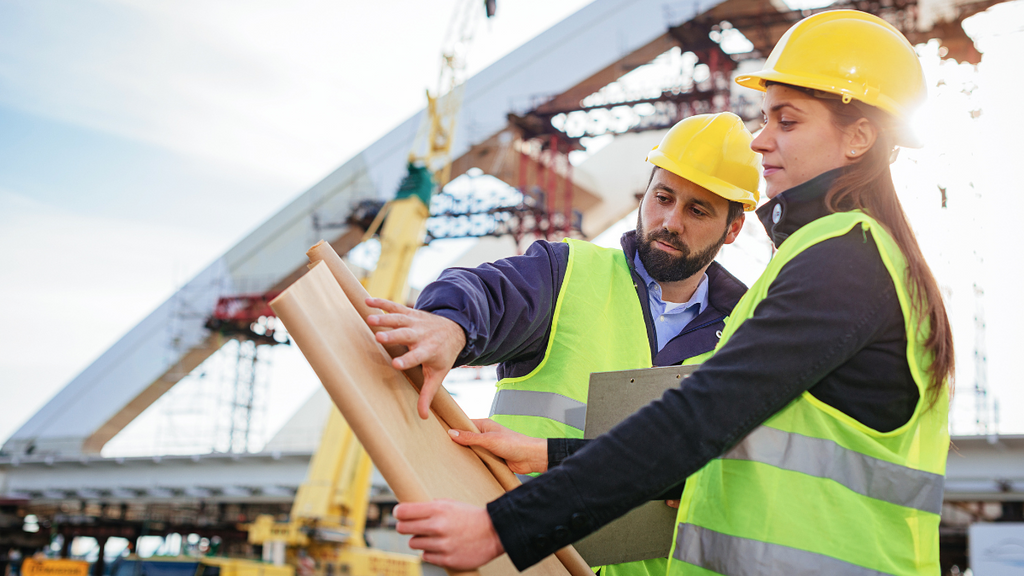How Geotheta can Save You Time, Stress, and Money.
Wiki Article
How Geotheta can Save You Time, Stress, and Money.
Table of ContentsGeotheta Things To Know Before You Get ThisThe 9-Minute Rule for GeothetaSome Ideas on Geotheta You Should KnowIndicators on Geotheta You Should KnowThe smart Trick of Geotheta That Nobody is Talking About

They carry out site examinations, accumulate samples, do lab tests, and examine information to examine the viability of the ground for construction jobs - Consulting Engineer. Based on their searchings for, geotechnical designers offer recommendations for foundation style, incline security, keeping frameworks, and mitigation of geotechnical risks. They work together with other experts, such as engineers, structural designers, and construction teams, to guarantee that geotechnical considerations are integrated into the general job style and execution
By assessing the behavior and residential or commercial properties of soil and rock, they can recognize possible geotechnical threats such as landslides, dirt settlement, or incline instability. Their competence aids protect against failings or crashes that can jeopardize lives and home. Here are some detailed duties and responsibilities of a geotechnical designer: Website Examination: Geotechnical engineers conduct website investigations to collect information on subsurface problems.
They analyze the information to comprehend the properties and behavior of the soil and rock, including their strength, permeability, compaction features, and groundwater problems. Geotechnical Evaluation and Design: Geotechnical engineers analyze the information accumulated during website examinations to assess the security and viability of the site for building and construction tasks. They do geotechnical estimations and modeling to review elements such as bearing capacity, negotiation, slope stability, side planet stress, and groundwater flow.
Some Known Details About Geotheta
Foundation Design: Geotechnical engineers play a crucial duty in designing structures that can safely sustain the desired structure. They examine the soil problems and tons requirements to establish the suitable foundation type, such as superficial structures (e.g., grounds), deep foundations (e.g (https://www.pageorama.com/?p=geotheta)., piles), or specialized methods like dirt enhancement. They take into consideration variables such as negotiation restrictions, birthing capability, and soil-structure interaction to create optimum foundation designsThey review building and construction strategies, monitor website tasks, and carry out field inspections to confirm that the design recommendations are adhered to. If unexpected geotechnical problems arise, they analyze the circumstance and supply recommendations for removal or changes to the style. Threat Assessment and Mitigation: Geotechnical designers assess geotechnical hazards and threats connected with the job website, such as landslides, liquefaction, or dirt disintegration.

Cooperation and Interaction: Geotechnical designers function carefully with other professionals associated with a job, such as engineers, structural designers, and construction groups. Effective communication and collaboration are important to integrate geotechnical considerations right into the general task style and building and Engineer of Record construction process. Geotechnical designers supply technical know-how, answer queries, and make certain that geotechnical demands are fulfilled.
Excitement About Geotheta
Right here are some kinds of geotechnical designers: Structure Engineer: Structure designers specialize in creating and analyzing structures for frameworks. They assess the dirt conditions, tons requirements, and website attributes to establish one of the most proper foundation type and style, such as superficial structures, deep structures, or specialized strategies like stack structures.They evaluate the factors affecting incline stability, such as soil residential or commercial properties, groundwater conditions, and slope geometry, and create strategies to avoid incline failings and alleviate risks. Earthquake Engineer: Quake designers specialize in assessing and making frameworks to withstand seismic forces. They assess the seismic hazard of a site, review dirt liquefaction possibility, and develop seismic style requirements to guarantee the safety and strength of structures during earthquakes.
They do area testing, accumulate examples, and analyze the gathered data to characterize the soil residential or commercial properties, geologic developments, and groundwater conditions at a site. Geotechnical Instrumentation Designer: Geotechnical instrumentation engineers concentrate on surveillance and measuring the actions of dirt, rock, and frameworks. They set up and keep instrumentation systems that keep track of aspects such as dirt negotiation, groundwater degrees, incline motions, and structural displacements to assess efficiency and supply very early warnings of potential concerns.
Indicators on Geotheta You Need To Know
They perform examinations such as triaxial tests, combination tests, straight shear examinations, and leaks in the structure examinations to gather data for geotechnical analysis and layout. Geosynthetics Engineer: Geosynthetics designers specialize in the layout and application of geosynthetic materials, such as geotextiles, geogrids, and geomembranes. They use these materials to improve soil security, strengthen inclines, give drainage services, and control erosion.They tend to be investigative individuals, which implies they're intellectual, reflective, and inquisitive. They are interested, systematic, rational, logical, and sensible. Some of them are likewise social, meaning they're kind, charitable, participating, individual, caring, handy, empathetic, sensible, and pleasant - Geotechnical Engineers.
In the office environment, geotechnical designers use specialized software application devices to perform computations, produce layouts, and analyze information. They prepare records, testimonial task requirements, interact with clients and team members, and coordinate project tasks. The office setting gives a conducive setting for research, evaluation, and partnership with other specialists involved in the job.
The Ultimate Guide To Geotheta
They frequently visit task websites to perform site examinations, evaluate geotechnical problems, and gather information for evaluation. These visits involve traveling to various locations, sometimes in remote or difficult surfaces. Geotechnical designers might carry out dirt tasting, conduct tests, and monitor construction tasks to make certain that the geotechnical aspects of the job are being implemented appropriately.Geotechnical designers also function in specialized geotechnical research laboratories. Geotechnical research laboratory designers work extensively in these atmospheres, handling testing equipment, running instruments, and tape-recording data.
Report this wiki page